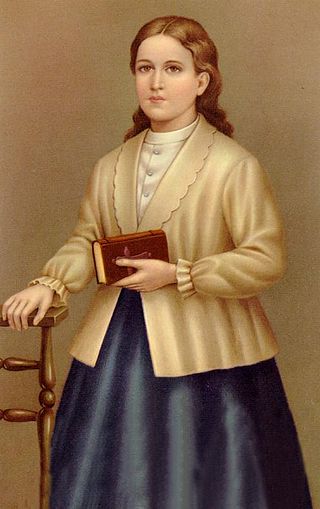
Narcisa de Jesús Martillo Morán was an Ecuadorian virgin and Dominican tertiary in the Roman Catholic Church. Martillo was known for her charitable giving and strict devotion to Jesus Christ while living a virginal and austere life of prayer and penance. Her devotion to prayer and the mortification of the flesh was strong and it led her to the decision to live as a member of the Third Order of Saint Dominic in Patrocínio (Peru), where she died on 8 December 1869. Narcisa de Jesús was beatified on 25 October 1992.

Agnes of Montepulciano, OP was a Dominican prioress in medieval Tuscany who was known as a miracle worker during her lifetime. She is honored as a saint by the Catholic Church.

Margaret of Città di Castello, TOSD was an Italian Catholic educator and a Dominican tertiary. Margaret had disabilities and became known for her deep faith and holiness.
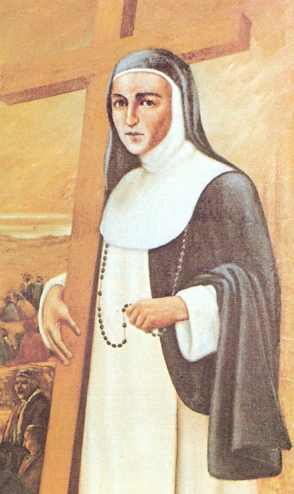
Ana Monteagudo Ponce de Leon, OP, also known as Anaof the Angels Monteagudo, was a Peruvian Catholic nun from the Dominicans.
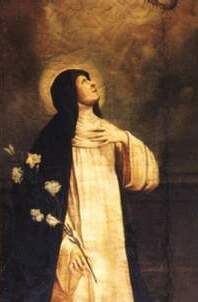
Stephana de Quinzanis, TOSD was an Italian sister of the Third Order of St. Dominic, stigmatic and mystic. She was beatified by Pope Benedict XIV in 1740.

Osanna of Cattaro was a Catholic visionary and anchoress from Cattaro. She was a convert from Orthodoxy of Serbian descent from Montenegro. She became a Dominican tertiary and was first venerated in Kotor. She was later beatified in 1934.

Maria Vittoria De Fornari Strata was an Italian Roman Catholic nun and the foundress of the Order of the Annunciation – or Blue Nuns. Fornari was married for just under a decade and decided not to find another spouse after having a vision of the Madonna who instructed her to lead a chaste life of motherhood. The widow decided to found an order not long after this based on the Carmelite charism.
Francesco Antonio Marcucci was a Roman Catholic Italian bishop and a member of the Secular Franciscan Order. Marcucci was also the founder of the Pious Workers of Mary Immaculate.

Ludwika Szczęsna, SSCJ was a Polish Catholic religious sister. She was the co-founder of the Sisters, Servants of the Most Sacred Heart of Jesus which she established with Józef Sebastian Pelczar.
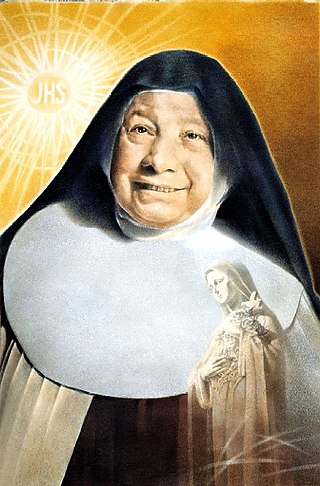
Maria Crocifissa Curcio, CMST was an Italian Catholic religious sister who established the congregation of the Carmelite Missionary Sisters of Saint Therese of the Child Jesus.

Gertrude Prosperi was an Italian Benedictine. Prosperi assumed the religious name Maria Luisa Angelica and finally served as the abbess of her convent for an extended period of time until her death.

Andrea Franchi was an Italian Roman Catholic member of the Order of Preachers who served as the Bishop of Pistoia before his resignation due to ill health. Franchi became a noted preacher and evangelist who was also known for his holiness and his deep commitment to the poor of his diocese.
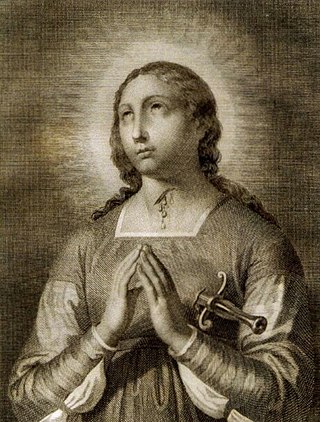
Camilla Gentili was an Italian Roman Catholic from Macerata. She was married to the anti-religious and abusive Battista Santucci, who murdered her in cold blood in opposition to her faith and her perceived disobedience.

Agostina Camozzi - in religious Cristina - was an Italian Roman Catholic professed religious from the Order of Saint Augustine. Camozzi led a dissolute life as a widow and a soldier's mistress before she became a nun and adopted a life of total repentance.

Ugolino da Gualdo Cattaneo was an Italian Roman Catholic professed religious and friar of the Order of Saint Augustine. Ugolino is best known for founding an Augustinian convent in Gualdo Cattaneo in 1258 where he served as its prior until his death. He practiced a rigorous spiritual life with austerities including frequent bouts of strict silence and fasting.

Elena Duglioli was an Italian Roman Catholic aristocrat from Bologna noted for her devotion to Christian life and social teachings. Duglioli wanted to become a nun for the Poor Clares but instead married in order to please her parents. Duglioli is best known for commissioning a chapel with an image of Saint Cecilia to whom she was devoted.
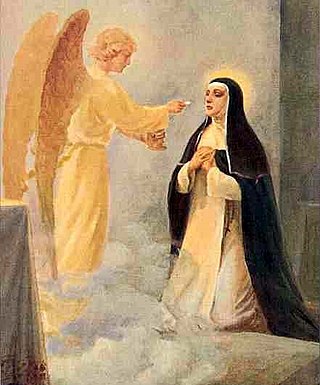
Emilia Bicchieri, OP was an Italian Catholic nun of the Dominican Order. Born to a patrician, she is best known for founding a convent in her hometown of Vercelli, where she served as prioress.

Giacomo Bianconi was an Italian Roman Catholic priest and a professed member of the Order of Preachers. Bianconi - who hailed from Umbria - joined the order in his adolescence and dedicated his pastoral career to his flock and on one notable occasion aided refugees when Frederick II sacked the area in 1248. He also combatted heresies and managed to convert one of their chief propagators while also distinguishing himself through his life of extreme poorness that went past the Dominican standards.
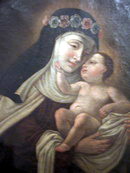
Giovanna Scopelli, O.Carm was an Italian Carmelite nun who established her own convent. Scopelli was forbidden to enter the third order branch of the order during her adolescence and waited until her parents died to embrace the religious life.

Colomba Matylda Gabriel - in religious Janina - was a Ukrainian Roman Catholic professed religious and the founder of the Benedictine Sisters of Charity. Gabriel studied under the Order of Saint Benedict in Lviv and later became a Benedictine herself while dedicating herself to teaching at her old school before she was forced to relocate to Rome in 1900 where she founded her order and joined a Benedictine branch there.



















